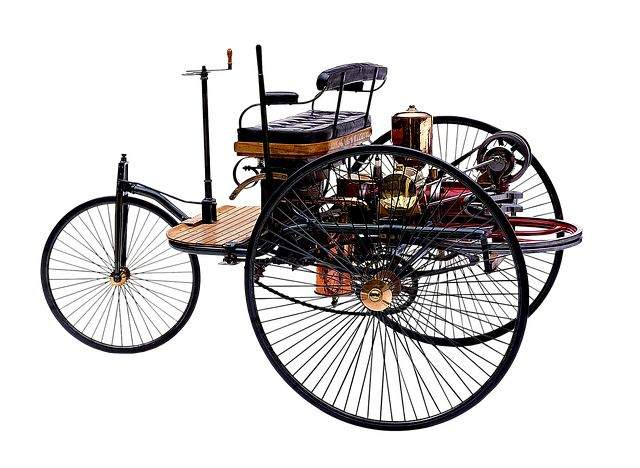Learn how to register your car in California with our step-by-step guide. This process involves understanding key requirements, gathering essential documents for VIN verification, performing a DMV vin check, and completing either an online or in-person registration. Ensure you have all necessary paperwork ready to streamline the procedure and obtain your new license plate promptly. Master the art of car registration in California with our expert advice on dmv vin verification.
- Understand California Car Registration Requirements
- Gather Necessary Documents for VIN Verification
- Perform DMV Vehicle Identification Number (VIN) Check
- Complete Online or In-Person Registration Process
- Pay Registration Fees and Receive Your Plate
Understand California Car Registration Requirements

Before registering your car in California, it’s crucial to understand the state’s specific requirements for vehicle registration. The California Department of Motor Vehicles (DMV) mandates several steps that owners must complete before their vehicles can be legally operated on public roads. One essential step is the DMV VIN verification process, which ensures the vehicle’s identity and authenticity by checking its unique Vehicle Identification Number (VIN).
This verification is typically done through a mobile vin inspection or online platform, allowing you to confirm your car’s details conveniently. The process involves cross-referencing the provided VIN with official records to ensure it matches a registered vehicle and complies with all legal standards. By adhering to these requirements and completing the necessary VIN inspections, California residents can securely register their vehicles and enjoy smooth, compliant operations on state highways.
Gather Necessary Documents for VIN Verification

To register your car in California, you’ll need to go through a process known as DMV VIN verification. Before you begin, ensure you gather all the necessary documents. The primary one is the Vehicle Identification Number (VIN) report, which can be obtained through a mobile vin inspection or by visiting a certified inspection station. This report confirms your vehicle’s make, model, year, and other critical details.
Additionally, have your proof of ownership ready, typically a title document or a bill of sale, along with valid identification such as a driver’s license or state-issued ID card. If the car is not yours but you’re acting on behalf of the owner, an authorized signature may be required. Also, don’t forget to bring any relevant insurance documents if applicable. Having these documents prepared will ensure a smoother process during your dmv vin verification.
Perform DMV Vehicle Identification Number (VIN) Check

Before registering your vehicle in California, it’s crucial to complete a DMV Vehicle Identification Number (VIN) check. This step is essential for ensuring that the car you’re looking to register has not been reported stolen or has any outstanding issues. The process is straightforward; you can perform a VIN inspection at a DMV office or use a mobile vin verifier service to verify the vehicle’s history remotely.
A mobile vin verification service offers a convenient option, allowing you to check a vehicle’s identity and status from the comfort of your home or on-the-go using your smartphone. This method not only saves time but also provides real-time data, ensuring that all the information is up-to-date and accurate. Once you’ve confirmed the vehicle’s legitimacy through a vin inspection, you’ll have one step closer to completing your California car registration process smoothly.
Complete Online or In-Person Registration Process

In California, registering a car involves either completing an online or in-person process with the Department of Motor Vehicles (DMV). The first step is to gather all necessary documents, including proof of ownership, valid identification, and current insurance information. Once prepared, you can initiate the registration through the DMV’s website or at one of their field offices. Online registration offers convenience and speed, allowing you to submit your application and have it processed remotely. Alternatively, visiting a DMV office ensures immediate assistance from staff members who can guide you through the process if needed.
A crucial part of the registration involves the DMV vin verification, which checks the vehicle’s history and ensures it meets safety standards. For added convenience, some services offer mobile vin inspection or mobile vin verifier options, allowing you to complete this step from the comfort of your home or on-the-go. This modern approach streamlines the traditional process, making car registration in California more accessible and efficient.
Pay Registration Fees and Receive Your Plate

After completing your vehicle’s registration application, it’s time to settle the fees. The California Department of Motor Vehicles (DMV) requires a series of payments for car registration, including a base fee and optional services like rapid processing or specialized plates. Ensure you’re prepared with the necessary payment methods accepted by the DMV—typically credit cards, checks, or money orders.
Once your payment is processed, the DMV will perform a DMV vin verification to confirm the vehicle’s details using its unique Vehicle Identification Number (VIN). This step ensures the accuracy of your application. Following successful verification, you’ll be issued a registration certificate and license plates. You can choose between standard or personalized plates, with an additional fee for the latter. Expect to receive your new plates within a few days after submission.
Registering a car in California involves understanding state requirements, gathering essential documents, and completing either an online or in-person registration process. After passing the DMV’s VIN verification, you’ll pay the necessary fees and receive your vehicle’s license plate. Remember to keep your registration up-to-date for legal compliance and convenience.
